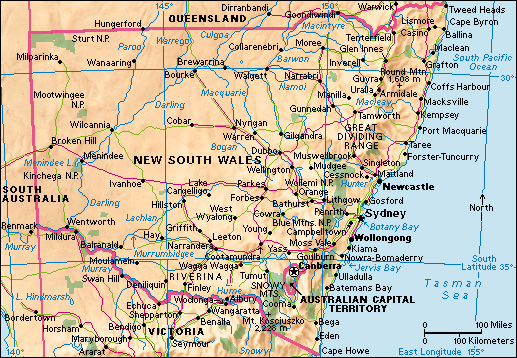Lismore (pop. 27,916) is a city in the far northeast of New South Wales, Australia. It lies in the Northern Rivers District on the Wilsons River. The Wilsons River, the northern arm of the Richmond River, is fed by several tributaries, including Coopers Creek and Goolmangar Creek.

Lismore has a warm climate and receives a significant amount of rainfall. It is near an area of rain forest known as the Big Scrub. The rain forest is protected as part of the Victoria Park Nature Reserve.
Lismore has a highly productive dairy industry. Other farming activities in the area include raising hogs and cattle, and growing flowers, macadamia nuts, and tropical fruits. Many residents work in education, health care, retail services, and social services.
The Lismore area was traditionally inhabited by the Bundjalung people, an Aboriginal group from what is now New South Wales. The first known European to encounter the land was Captain Henry Rous, a British officer who explored the Richmond River region in 1828.
After Rous’s arrival, several sheep and cattle stations (ranches) were established in the area. The first station at what later became Lismore was established in 1843. In 1845, the Scottish farmer William Wilson took over the station, which he named Lismore, after a Scottish island. A settlement grew up around the station. The settlement became the town of Lismore in 1856. The town’s early industries were logging and cattle grazing. Its first dairy was established in 1870. Lismore was declared a municipality in 1879 and a city in 1946.
Throughout its history, Lismore has been affected by floods. Extreme flooding occurred in 1954, 1974, and 2017. In late February 2022, extremely heavy rain caused the worst flood in Lismore’s recorded history. Thousands of people were forced to leave their homes. The flood conditions lasted into early March. Additional heavy rain led to serious flooding again from late March to early April. 
